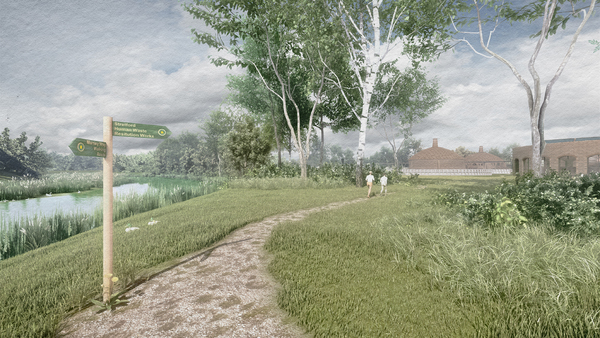Working With Waste - Building With Sewage.
In 2023 alone, the privatised water companies of the United Kingdom were responsible for 464,056 recorded discharges of untreated sewage into rivers. These discharges, paired with rigid artificial river structures and human-centric riparian zones are destroying our river’s biodiversity.
The problem is heavily political and requires urgent action from the government to penalise these companies for their obvious misconduct. What if there was a spatial solution that could redefine what we perceive as waste, while also improving river habitats for both ourselves and their native species? This project proposes a radical overhaul of the existing wastewater treatment works (WWTW) to change both corporate and public perception of waste.
On a broader scale, the WWTW is reshaped to integrate with and bolster their damaged host waterways and their riparian zones as positive extensions of symbiotic bio-infrastructure. These large sites are taken from private corporate ownership and are returned equally to public use and biodiverse rewilding.
As water is restored, the solid sewage waste, sludge, is set aside. 92.2% of this carbon-rich waste material, amounting to 49 million tonnes per year, is either landfilled or incinerated.
This thesis also proposes a gruesome yet undeniably practical solution. Why not turn this waste product, destined for a grave, into construction material? The compressed sludge brick proposes a low-tech, carbon storing construction alternative that also repurposes an internationally unavoidable waste.
How can example architecture advertise new materiality?
What social barriers need to be overcome for the compressed sludge brick to become standard?
What other choices will we have when material scarcity makes a solution too late?


